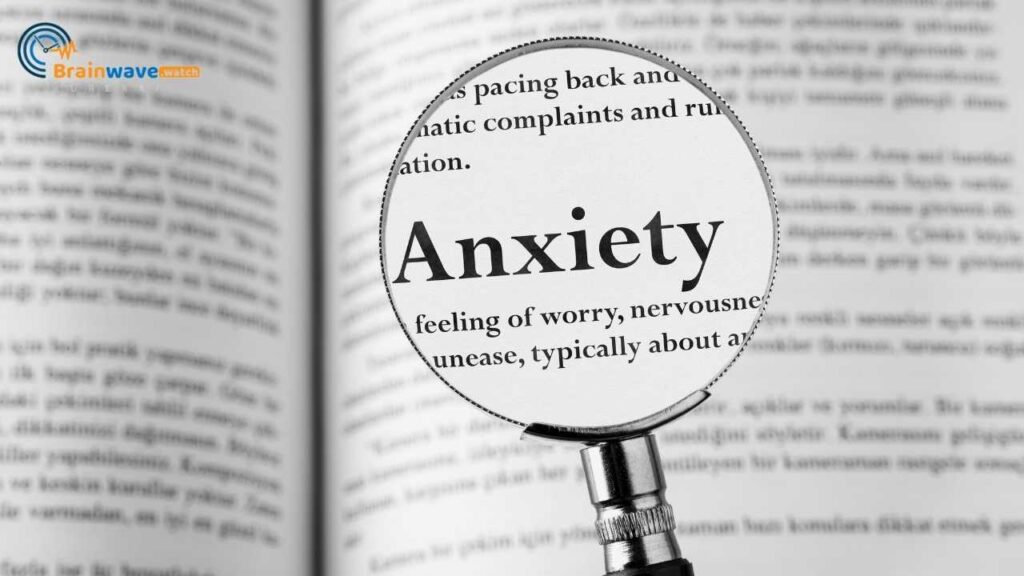One common behavior that many autistic individuals engage in is self-talk, or talking out loud to themselves. Self-talk can involve repeating words, phrases, or sounds aloud; having back-and-forth conversations with oneself; or providing a running commentary of thoughts and actions. This self-talk is often done softly under one’s breath, but can sometimes be loud enough for others to hear.
Self-talk serves various purposes for people with autism. It can be a way to self-soothe, work through thoughts and emotions, practice language and social skills, and stimulate or organize one’s mind. While self-talk occurs in neurotypical people as well, it tends to be more prevalent and persistent in those with ASD. Understanding why autistic individuals talk to themselves can provide insight into the autistic experience.
Prevalence of Self-Talk in Autism
Self-talk, also known as “private speech”, is very common among autistic individuals. Numerous studies have found high rates of self-talk in children and adults on the autism spectrum.
One study found that nearly 60% of autistic children engaged in frequent self-talk, compared to around 33% of neurotypical children. The self-talk also persisted for longer in the autistic group.
Other research has reported that up to 90% of autistic children exhibit self-talk, whereas only around 20-60% of neurotypical children talk to themselves. The self-talk in autism also tends to be more audible, complex, and prevalent across contexts.
In adults, self-talk remains common. One study of autistic adults found that 91% reported speaking their thoughts aloud or talking to themselves frequently.
Reasons for Self-Talk
People with autism engage in self-talk for a variety of reasons.
One reason is stimming, which refers to self-stimulatory behaviors that provide sensory input. Self-talk can serve as an auditory stim, providing soothing, repetitive sounds and words. The familiarity of hearing their voice can calm anxiety.
Self-talk may also help some autistic individuals process emotions and sensory experiences. Talking through feelings out loud can help label emotions and work through distress. Self-talk can also describe sensory input, like noises or textures, as a way to regulate and understand that input.
Additionally, self-talk can serve as a coping mechanism for social situations. Rehearsing conversations aloud or talking through social scripts provides practice for social interactions that may be challenging. Self-talk helps some autistic people prepare for and recover from social overload and anxiety.
Echolalia
Echolalia is the repetition or echoing of words, phrases, or sentences just spoken by another person. It is a common feature of autism spectrum disorder, with over 75% of individuals displaying some degree of echolalia.
For those with autism, echolalia serves many purposes. It can be a way of processing information and language. By repeating words back, the child is learning how to communicate. Echolalia also provides a source of comfort and familiarity. Echoing familiar words, TV jingles, or movie quotes provides predictability in social situations that may cause anxiety.
In terms of self-talk, echolalia provides a bank of language that the child can draw upon. They may repeat phrases to themselves as a way to calm down, focus, or reinforce an idea. The speech is functional, even if it echoes something they’ve heard before. With time and therapy, echolalia often evolves into more spontaneous, flexible language.
Inner Speech
Inner speech, also known as verbal thinking, refers to the internal monologue and cognitive processes that occur within one’s mind. For many autistic individuals, inner speech works differently compared to neurotypical people.
Some key differences include:
-
Impaired inner speech: Some autistic individuals have difficulties generating fluent inner speech and putting their thoughts into self-directed words and sentences. This can make it challenging to work through cognitively demanding tasks.
-
Visual thinking: Many autistic people are visual thinkers who think in pictures, images, and associations rather than words. Their inner dialogue may not be verbal.
-
Difficulty understanding metaphors: Idioms, figures of speech, and metaphors often used in inner speech can be challenging for autistic people to process and understand. Their inner speech tends to be more literal.
-
Limited inner speech: Some autistic people have reported very limited inner speech, such that their thoughts are generally non-verbal.
-
Orderly inner speech: The inner speech of autistic individuals tends to be highly organized and aligned with logical rules. It lacks the randomness and disjointed nature of typical inner speech.
Social Communication Difficulties
Many people with autism struggle with social communication and interaction. They may have difficulties understanding social cues, relating to others, holding conversations, and picking up on subtle verbal and nonverbal language. This can lead to feelings of isolation, anxiety, and frustration.
Since social connection involves a back-and-forth exchange, some individuals with autism talk to themselves as a way to fill conversational gaps. Self-talk provides the stimulation of social interaction even when other people are not engaged. It allows autistic individuals to practice having conversations and work through social difficulties in a self-directed manner.
Some research indicates that autistic children engage in more solitary speech than non-autistic children. Self-talk may start as a way to compensate for challenging social situations. It can become a habit or coping mechanism that persists even when other people are present. Difficulty communicating with others seems to be a major trigger for increased self-talk in autism.
Coping Strategies
Self-talk can serve as an important coping mechanism for people with autism. Since autism often comes with challenges related to communication, anxiety, and sensory issues, self-talk provides a way to self-soothe, work through problems, and cope with overwhelming situations.
For some, self-talk helps manage anxiety and emotional regulation. Talking through worries, fears, or stressful events in a calm, rational manner can help gain control and perspective. Self-talk can also be used as positive affirmations to boost confidence or mood.
Self-talk assists with executive functioning and cognitive processes like planning, organization, and task focus. Talking through step-by-step instructions, making lists, or setting goals out loud helps with processing and task initiation. This facilitates independence and self-sufficiency.
When dealing with sensory overload, self-talk provides a regulating effect. Repeating calming words or phrases can drown out loud noises or distract from unpleasant stimuli. Self-talk also allows the expression of physical discomfort in a way others can’t necessarily see.
Overall, self-talk equips individuals with autism with an invaluable self-regulation skill for coping with life’s daily challenges. It demonstrates resourcefulness in utilizing their inner resources to empower themselves.
Support and Interventions
Self-talk in autistic individuals is often a way for them to regulate emotions, process information, and cope with challenges in daily life. As a parent or educator, there are supportive strategies you can use to help an autistic child or student who engages in frequent self-talk:
-
Remain patient and avoid punishing or discouraging self-talk. Remember that this serves an important function for the child.
-
Notice when the self-talk seems excessive or disruptive. Help redirect the child to another calming activity.
-
Teach the child when self-talk may not be appropriate, like during quiet reading time or tests. Provide alternative strategies.
-
If the self-talk involves concerning topics like self-harm, seek professional support like counseling.
-
Encourage the use of self-talk in private settings versus public places where it may draw unwanted attention.
-
Work on social communication skills through modeling, scripts, and roleplay. As these improve, self-talk may lessen.
-
Avoid embarrassing the child for self-talking. Correct others who tease or bully as well.
-
Focus on strengths and talents instead of deficits. Build confidence and self-esteem.
-
Involve the child in social skills groups to learn from peers. Practice strategies together.
-
Teach calming techniques like deep breathing, visualization, or fidget toys to regulate emotions.
The most important thing is to accept the child’s need for self-talk while providing support to use it productively. Patience, understanding, and positive reinforcement go a long way.
Self-Talk as a Strength
For many autistic people, self-talk provides important cognitive and emotional benefits that can be seen as strengths.
-
Self-talk can help autistic people process their thoughts, emotions, and experiences. Verbalizing inner thoughts out loud can help make sense of complex ideas or feelings.
-
Using self-talk provides an outlet for emotional regulation. Talking through stressful situations or big feelings can help calm the mind and body.
-
Self-talk facilitates focus and concentration. Speaking aloud can help block out external stimuli and distractions, improving focus on tasks.
-
The tendency for repetition in self-talk creates structure and predictability that is comforting for many autistic individuals.
-
Putting thoughts into words, even just to oneself, exercises communication abilities. This can help develop verbal skills over time.
-
Self-talk can provide companionship for those who struggle with loneliness or social isolation. Narrating one’s activities and thoughts can help autistic folks feel less alone.
-
Verbalizing inner thoughts, wants, and needs to oneself helps promote self-understanding and self-acceptance.
-
Overall, the ability to self-talk demonstrates strong cognitive and self-regulation skills that allow autistic people to better manage life’s challenges.
Conclusion
Self-talk is common among autistic individuals for a variety of reasons. Many engage in functional self-talk as a coping strategy for dealing with emotions, social situations, and sensory input. Others display echolalia, the repetition of words and phrases, which serves a self-regulating function. Some have active inner speech that they are more inclined to vocalize.
While self-talk can draw unwanted attention in public settings, it is not something to be discouraged at home. It often serves a valuable purpose for the autistic person. With understanding and support from loved ones, autistic individuals can feel comfortable engaging in self-talk as a beneficial tool.
The key is recognizing that self-talk is a natural part of autism. It should not be viewed as unusual or inappropriate. With acceptance and accommodations as needed, autistic people can utilize self-talk to self-regulate and process their experiences. Though sometimes misunderstood by others, self-talk provides comfort and coping for many on the spectrum. Overall, it is an important aspect of autism that merits more understanding, support, and acceptance.







